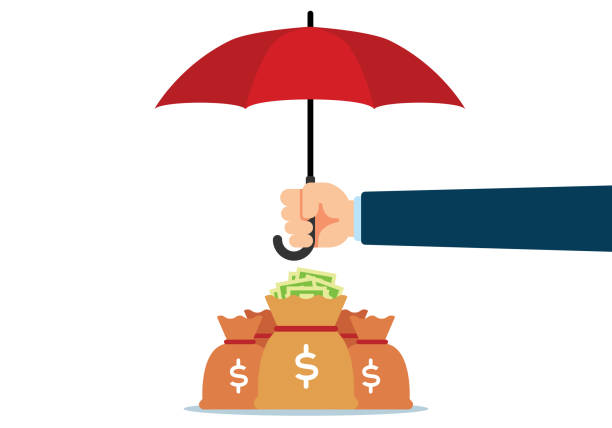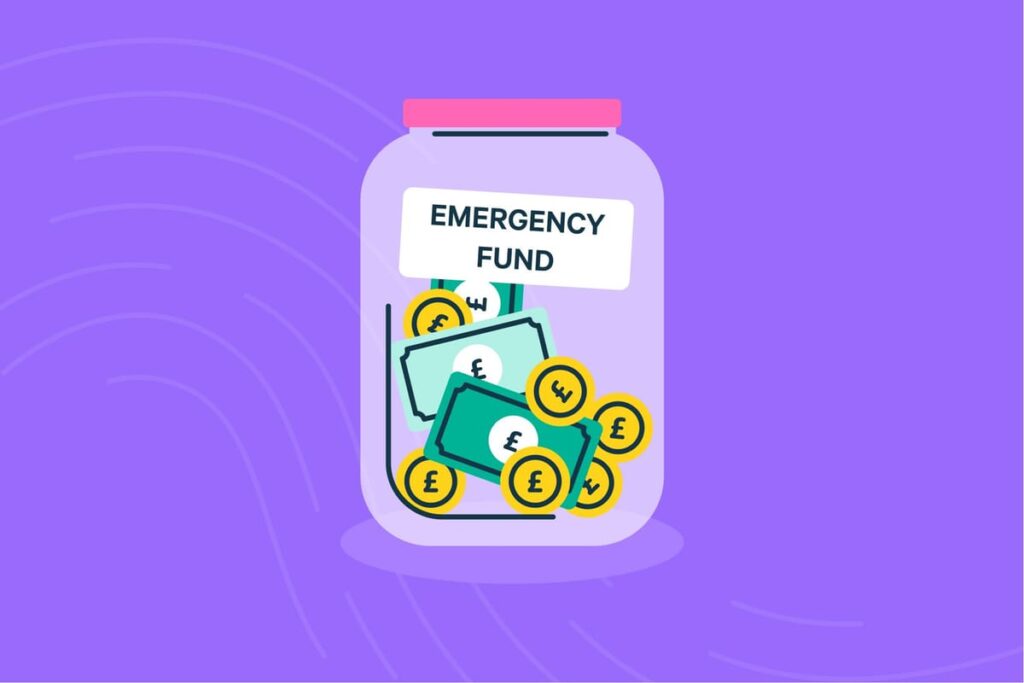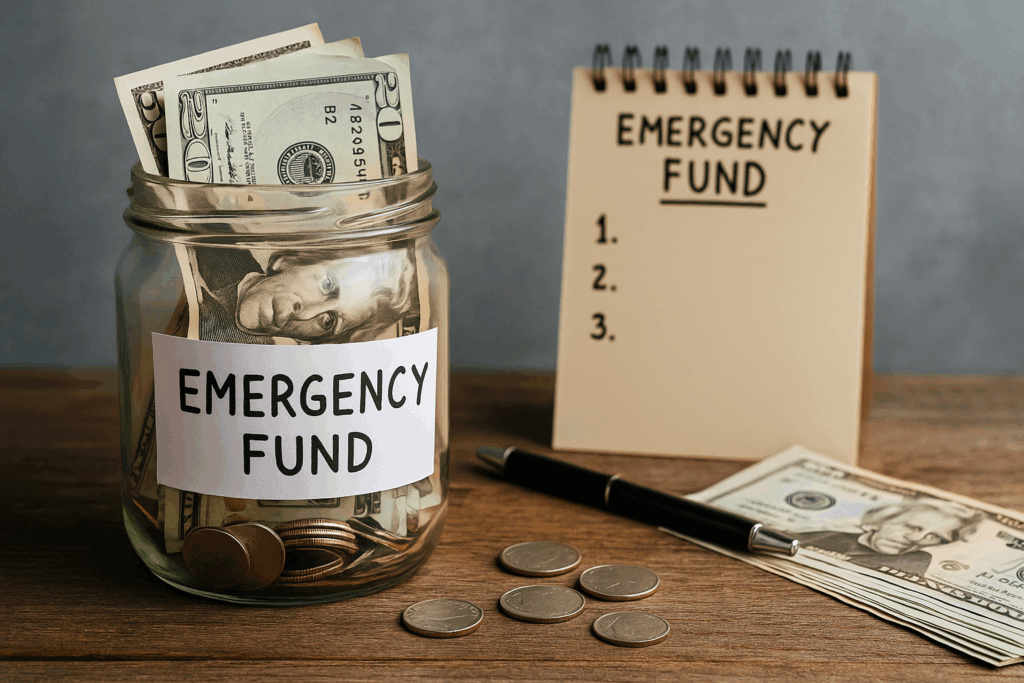The weather forecast of life is consistently unpredictable. One day, the sun is shining, your job is stable, and your finances feel secure. The next, a cloud appears on the horizon—a sudden job loss, an unexpected medical bill, or a major home repair. When the downpour hits, are you prepared to face it, or will you be left completely exposed?
A financial umbrella is your best defense against these storms. It’s not an investment for growth or a fund for fun. Your financial umbrella, more commonly known as an emergency fund, is a designated stash of cash designed for one purpose: to keep you dry and safe when life’s financial storms arrive.
Waiting for the storm to hit before you start preparing is a recipe for disaster. This article will guide you through the “why” and “how” of building your financial umbrella so you can stand firm, no matter what the forecast holds.
The Forecast: What Do Financial Storms Look Like?
Financial storms come in many forms, and they often arrive without a warning. A simple awareness of these potential events is the first step toward preparing for them.
- The Hurricane of Job Loss: This is perhaps the most devastating financial storm. Your primary source of income vanishes, and the clock starts ticking on your ability to cover essential living expenses.
- The Tsunami of a Medical Emergency: Even with good health insurance, a major illness or accident can leave you with thousands of dollars in out-of-pocket costs, deductibles, and co-pays.
- The Thunderstorm of Unexpected Repairs: These are the common downpours. A car transmission gives out, the furnace stops working in the middle of winter, or a water heater breaks. These events are unpredictable and can cost thousands of dollars to fix.
- The Gust of a Family Emergency: Life can call you away to support a loved one. The cost of last-minute airfare, lodging, or caregiving can quickly become a significant financial strain.
Without a financial umbrella, these events can force you to turn to high-interest debt, like credit cards or personal loans, which only prolongs the financial stress long after the initial crisis has passed.
The “Why”: The Cost of Being Unprepared
The cost of being unprepared goes far beyond just the dollar amount of the emergency itself.
- You Get Soaked by Debt: Using credit cards to cover an emergency is like standing in the pouring rain with a sieve. The high interest rates mean you’ll pay far more for the emergency than it originally cost, trapping you in a cycle of debt.
- Your Future Gets Washed Away: Without a dedicated fund, you might be forced to tap into your retirement accounts or other long-term investments. Not only do these withdrawals often come with penalties and taxes, but they also rob your future self of the power of compound interest, making it harder to rebuild.
- Emotional Stress Rains Down: Nothing causes more stress and anxiety than financial insecurity. Being unprepared for a crisis can strain relationships, affect your sleep, and make you feel powerless.
The “How”: Building Your Financial Umbrella
Building your financial umbrella isn’t about luck; it’s about a systematic, layered approach. Think of it as a series of steps that will construct your safety net piece by piece.
Layer 1: The “Spokes” – Your Starter Fund
You don’t need to build the whole umbrella at once. Start with the frame. The most important first step is to save your “starter” fund of $500 to $1,000. This small cushion is enough to protect you from the common drizzles—a car battery replacement or a small medical co-pay.
- Find the Money Quickly: Commit to a “no-spend” challenge for a week or two. Sell a few unused items from your home. Use any unexpected windfalls, like a tax refund, to fund this initial layer.
Layer 2: The “Fabric” – The Full Cushion
Once your spokes are in place, it’s time to build the fabric that will provide full coverage. The goal here is to save 3 to 6 months of essential living expenses.
- Calculate Your Number: Add up your minimum monthly costs for housing, utilities, groceries, transportation, and minimum debt payments. Multiply that number by six. This is your ultimate goal.
- Make It a Priority: Treat your emergency fund as a bill—a non-negotiable payment you make to yourself. Pay yourself first, just as you would pay your rent or mortgage.
- The Accelerator: To build your fabric faster, focus on two areas:
- Expense Reduction: Look for big savings. Can you renegotiate your car insurance? Cut a few expensive subscriptions?
- Income Increase: Start a side hustle, take on extra hours at work, or sell more items from home. All of this extra income can go directly to your fund, accelerating your timeline.
Layer 3: The “Handle” – The Strategy
A great umbrella needs a sturdy handle to be useful. Your strategy is the handle that makes your emergency fund easy to use and maintain.
- Automate It: The secret to successful saving is to remove willpower from the equation. Set up an automatic transfer from your checking account to your emergency fund account on payday. The money is out of sight and out of mind before you have a chance to spend it.
- Stay Focused: Remember your “why.” Remind yourself that you’re not sacrificing lattes for no reason; you’re buying yourself security, peace of mind, and freedom.
The “Where”: Storing Your Umbrella
You wouldn’t leave your umbrella at a friend’s house when the forecast is rain. Your emergency fund needs to be stored in a place that is safe and easily accessible.
The Best Place: A High-Yield Savings Account (HYSA)
An HYSA is the perfect home for your emergency fund.
- Safety: Your money is insured by the FDIC (Federal Deposit Insurance Corporation), protecting your principal up to $250,000.
- Accessibility: You can transfer funds to your checking account within 1-3 business days. It’s not instant, which helps prevent impulse spending, but it’s quick enough for almost any emergency.
- Separation: Keeping your fund in a separate account from your daily checking account creates a psychological barrier that protects your money.
What to Avoid
- The Stock Market: The stock market is a fantastic place for long-term investments, but it’s far too volatile for an emergency fund. Your money could drop in value right before the storm hits.
- A Standard Checking Account: This is a terrible place for a savings fund. It earns almost no interest, and the money is too easily spent on non-essentials.
- Under the Mattress: This is not safe from fire, theft, or other forms of loss. It is completely unprotected.
Conclusion
The storm is coming. It’s not a matter of if, but when. The good news is that you have the power to prepare for it. Building your financial umbrella isn’t about living in fear; it’s about living with confidence. It’s about knowing that no matter how hard the rain comes down, you have the protection you need to stay dry.




